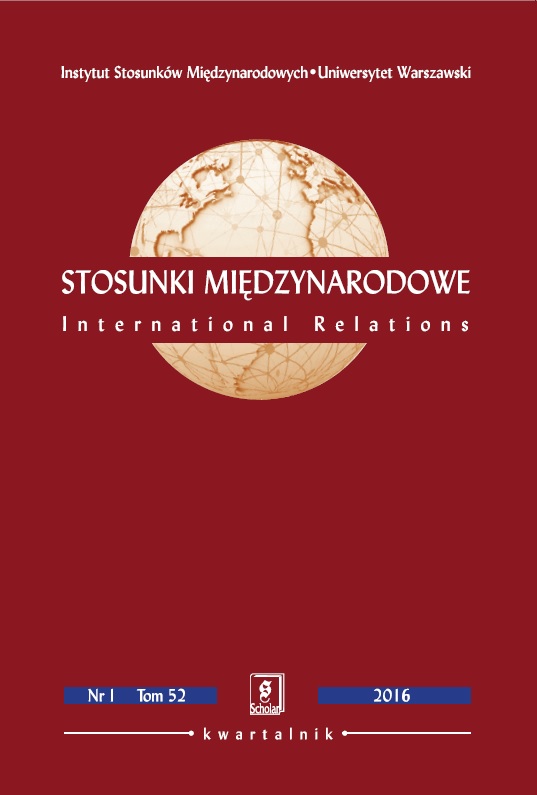La Charte des Nations Unies interdit-elle le recours à la force armée?
DOES THE CHARTER OF THE UNITED NATIONS PROHIBIT THE USE OF ARMED FORCE?
Author(s): Serge SurSubject(s): Politics / Political Sciences, Politics, International relations/trade
Published by: Wydawnictwo Naukowe Scholar Sp. z o.o.
Keywords: UN Charter; prohibition of the use of force; Security Council; self- defence
Summary/Abstract: This question is of key importance given that maintaining international peace andsecurity is what the Charter of the United Nations defines as the organisation’sprimary objective. The article constitutes an original interpretation of the prohibitionof the use of force included in the Charter of the United Nations. Article 55 in Chapter IX : International Economic and Social Co-operation speaks of peace inthe positive sense, that is not limited solely to the absence of conflicts but rootedin peaceful and friendly cooperation between nations. Peace in the negative sensemeans only the absence of armed conflicts. This concept of peace is predominantin the UN Charter, having legal and institutional guarantees. The legal guaranteeis set out in Article 2 Section 4, which radically restricts the right of states to useforce in international relations. The role of the institutional guarantee is playedby the Security Council. Its task consists in preserving and restoring internationalsecurity and peace, and its competences are determined in Chapter VII. Article51 of the same Chapter, in turn, which provides for a state’s inherent right ofindividual or collective self-defence. Does the UN Charter prohibit war? The word‘war’ as such is used in the Charter only once, in the Preamble, where war iscondemned. But violence has not disappeared from international relations since theUN Charter’s entry into force. The author presents three ways to interpret Article 2Section 4 of the UN Charter : integrist, nihilistic and pragmatic. The traditional,integrist interpretation assumes a universal and absolute ban on the use of forcein international relations ; the nihilistic interpretation assumes realistic evaluationof the situation, in practice granting numerous exceptions from the prohibition ofthe use of force. The author himself advocates the pragmatic interpretation, wherethe text of the norm is interpreted in the context of specific events that bring aboutthe use of force. The application of Article 2 Section 4 involves certain problems :the ban concerns only states, while non-state actors increasingly often use force ininternational relations as well. Other issues concern the interpretation of the threatof using force, restrictions to the application of the prohibition of the use of force,using force for implementing the principle of responsibility to protect and usingforce upon consent of the Security Council. The author separately focuses on theinherent right of individual or collective self-defence, provided for in Article 51 ofthe Charter. The majority of experts in the field represent the view that self-defenceis an exception from the principle of using force only in the case of armed aggressionof one state against another. The article further highlights the division betweenfunctional and structural self-defence. In the conclusion, the author points out theneed for the UN Charter to be more open, flexible and intelligent as regards theprohibition of the use of force.
Journal: Stosunki Międzynarodowe
- Issue Year: 52/2016
- Issue No: 1
- Page Range: 177-188
- Page Count: 12
- Language: French

